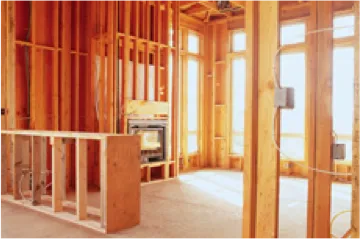Codes and Enforcement of Onsite/Offsite Improvement Standards
Government Code Section 65583(a) requires “An analysis of potential and actual governmental constraints upon the maintenance, improvement, or development of housing for all income levels,…including land-use controls, building codes and their enforcement, site improvements, fees and other exactions required of developers, and local processing and permit procedures…”
Codes and Enforcement

- Identify current “uniform building code” adopted and enforced by the jurisdiction. Describe how the building code is implemented and whether the process optimizes predictability for developers. A code amendment, which specifies expensive materials and/or methods, can pose a significant constraint to housing development or maintenance.
- Identify and analyze any local amendments to the state housing law or uniform building code.
- Discuss the type and degree of enforcement.
- Describe any efforts to link code enforcement activities to housing rehabilitation programs.
- Describe compliance with health and safety code 17980(b)(2).
When deciding whether to require a substandard building be vacated or to repair (as necessary), health and safety code requires local governments to give consideration to the needs for housing (as expressed in the housing element). The enforcement agency is required to give preference to the repair of the building whenever it is economically feasible to do so without having to repair more than 75 percent of the dwelling.
Onsite/Offsite Improvement Standards
Onsite/offsite improvement standards establish infrastructure or site requirements to support new residential development such as streets, sidewalks, water and sewer, drainage, curbs and gutters, street signs, park dedications, utility easements, and landscaping. While these improvements are necessary to ensure that new housing meets the local jurisdiction’s development goals, the cost of these requirements can represent a significant share of the cost of producing new housing.
Such requirements can reasonably be considered regulatory barriers to affordable housing if the jurisdiction-determined requirements are greater (and hence, more costly) than those necessary to achieve health and safety requirements in the community.
The housing element must identify and analyze improvements to street widths, curbs, gutters, sidewalks, water and sewer connections, landscaping, circulation improvement, and any other onsite/offsite improvement required by the jurisdiction that could potentially be a constraint to development of housing. In addition, the housing element must describe any generally applicable level of service standards or mitigation thresholds.
Substandard Housing Program
The Franchise Tax Board (FTB) operates the Substandard Housing Program, which assists the state and local agencies responsible for addressing unsafe living conditions that violate health and safety codes. Property owners in violation of health and safety code standards are not allowed to make certain deductions on their personal tax returns pursuant to California Revenue & Taxation Code (CR&TC) Sections 17274 and 24436.5. That additional revenue collected by FTB is transferred to the Local Code Enforcement Rehabilitation fund. These funds are then disbursed to the cities and counties that generated the notification of substandard housing to the FTB.

